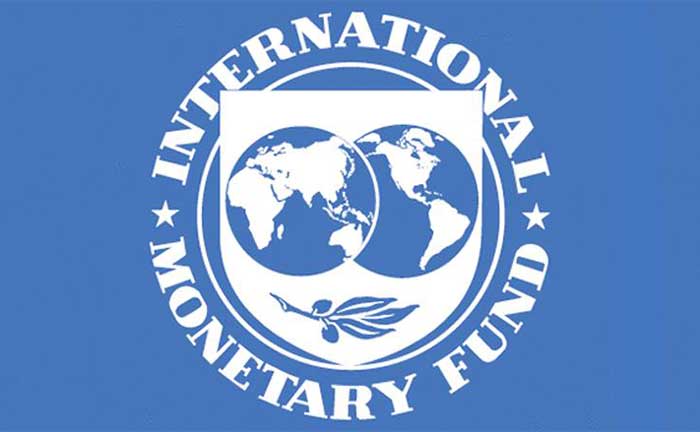Opinion
New Global Financing Pact Summit in France: Some suggestions

President Ranil Wickremesinghe will be among more than one hundred heads of state to attend the above conference in Paris from 22 to 23 June. Ad hoc debt restructuring of Sri Lanka and Ecuador’s debt buy-back would be discussed as recent examples of multilateral efforts to ensure the debt sustainability in developing countries. Since Sri Lanka is not out of the woods yet, it would be best to present some of the weaknesses we have in our ad hoc solutions designed with the support or insistence of the IMF for our debt crisis.
Why do I say the IMF support programme is ad hoc? I am not submitting a conclusion; instead my effort is to bring the views of eminent economists and accounting professionals into this discussion. According to the programme approved by IMF in March this year, Sri Lanka’s gross external financing needs for the year 2023 will amount to USD million – 6,636 (negative 6,636 (page 46 of IMF Country Report No. 23/116 of March 2023). Whatever the case, this amount needs to be financed to prevent an economic crisis. So, the source of financing will be from three major items namely, (1) borrowing, (2) other net capital inflows and (3) change in reserve assets. Under this programme the government is to borrow USD 2,120 mainly from multilateral and bilateral lenders except 11 million dollars. Then, net capital inflow will be USD 2,110 million, both will amount to USD 4,230 million. Therefore, the shortfall is USD 2,406 million (6,636 – 4,230). However, with the proposed “change in reserve assets amounting to USD -2,533 million (negative 2,533) new external financing gap is USD 4,939 million. This financing gap will be financed as follows; (1) IMF USD 663 million, (2) IFI budget support USD 900 million and (3) debt relief USD 3,376 million. All these three items amount to USD 4,939 million, the exact amount equal to the external financing gap.
However, let us consider the change in reserve assets. The amount is negative 2,533 million dollars, but on monetary authorities’ accounts this is positive, which means the amount is available to be used in case of extreme necessity but usually not expended under a very strict policy framework. Now, assume that we reduce the change in reserve assets by one billion dollars. In that case, we can reduce the amount of debt relief by one billion or we can reduce the government borrowing by one billion. If debt relief can be reduced by another one billion dollars that will make it easier for the debt restructuring negotiations. Otherwise, if there is a change in reserve assets by one billion dollars, the government borrowing can be reduced by one billion dollars and that will set the borrowing target easily. This kind of arrangement is more feasible if multilateral agencies provide a standby credit line which will never be used under a strong policy framework but will increase the foreign exchange reserve position by one billion in our case.
Even though the change in reserve assets in 2023 is estimated to be negative 2,533 million dollars in estimating gross external financing needs, in regard to the year 2024 the same is estimated to be negative 1,697 million dollars; it again rises to negative 2,392 in 2025. Supposing that everything is decided by market forces or by demand and supply including rate of exchange, according to the ideology of IMF, I strongly feel that those estimates are much more arbitrary than scientific. This means that it questions the economic wisdom in designing a strong policy framework for developing countries by existing multilateral financial institutions including IMF.
Additionally, recent macroeconomic theory reveals that when the demand and supply equilibrium is met, it always happens so by creating a component of debt that can never be paid back, and as such debt should keep on accumulating creating unsustainable debt bubbles under the current Fractional Reserve banking system, which is the current practice of almost all countries. The said debt occurs in three main debt regimes, namely in public debt or household debt or non-financial corporate debt or in all three which is defined recently as “Total Core Debt” by Bank of International Settlement. Perhaps, this theory might explain the severe debt crises faced by developed nations. The same will occur in developing countries too, if they show continuing dismal low economic growth patterns similar to mature developed economies.
Perhaps, these are some of the points Sri Lanka can take up at the Paris conference as one of the main goals of the conference is to evolve the existing multilateral development banks and to get increased participation with more contributions from countries which have more foreign exchange surpluses. If successful, the shift in vision suggested by the conference to articulate the protection of climate and biodiversity along with the United Nations Sustainable Development Goals can be remodeled with a new shift in scale of financing and through novel methods.
If the Paris summit is keen to evolve multilateral financial agencies including IMF, ultimately the scale and method of financing as cited in the example will have to be remodelled to ensure debt sustainability and the ideas behind policy framework upheld by those agencies evolved in view of the new findings of macroeconomic theories.
Hema Senanayake
hemasenanayake@yahoo.com